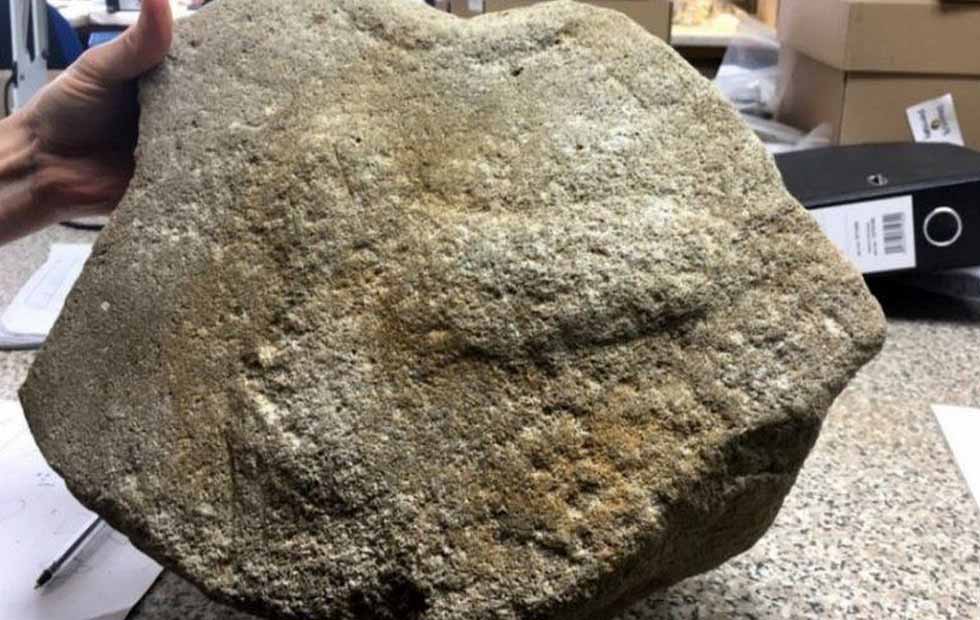2,000-Year-Old Roman Millstone Found with Massive Phallus Engraving
Over several months, as part of roadwork for an extensive 21-mile section of the A14 between Cambridge and Huntingdon, a millstone and others were discovered.
The finds came from the remains of a Roman villa near Godmanchester, a Highways England spokesperson told MailOnline.
However, the phallographic carving — made to give the millstone and its flour good luck and protection — was only recently identified by experts.
The upgraded stretch of road was opened to traffic in May of last year — but the millstone was not the only archaeological find revealed before the works finished.
Other finds included a woolly mammoth’s tusk, a woolly rhinoceros’s skull, an abandoned medieval village, and three dismembered men from 1,500 years ago.
Archaeologists also found the earliest known evidence of beer brewing in Britain, which dates back to as early as 400 BC.

According to Highways England’s Archaeology lead for the A14, Steve Sherlock, the penis-decorated millstone is important as it ‘adds to the evidence for such images from Roman Britain.’
‘There were known associations between images of the phallus and milling, such as those found above the bakeries of Pompeii, one inscribed with Hic Habitat Felicitas — “You Will Find Happiness Here”,’ he explained.
‘The phallus was seen as an important image of strength and virility in the Roman world, with it being common practice for legionaries to wear a phallus amulet, which would give them good luck before the battle.’
The millstone was examined by experts from the Museum of London Archaeology Headland Infrastructure and Oxford Archaeology.
Alongside the carving of the phallus on the millstone’s upper face, the team discovered two crosses that had been inscribed on its circumference.
The quern itself would have been a simple hand mill, such as typically consisting of two circular stones between which corn is ground.
According to the archaeologists, the millstone appeared to have been broken during use and subsequently adapted to be used as a saddle quern — a base stone in the grinding process — which would have hidden the genital image from sight.
The researchers reported that more than 300 querns millstones were recovered during archaeological work on the A14 upgrade project.

Decorated querns and millstones of any date are rare — and only four Roman millstones have ever been discovered from around a total of 20,000 nationwide. While crosses on such stones are more prevalent, these tend to be found only at military sites, the team explained.
‘As one of only four known examples of Romano-British millstones decorated this way, the A14 millstone is a highly significant find,’ said Oxford Archaeology’s worked stone specialist, Ruth Shaffrey.
‘It offers insights into the importance of the mill to the local community and the protective properties bestowed upon the millstone and its produce (the flour) by the depiction of a phallus on its upper surface.’




